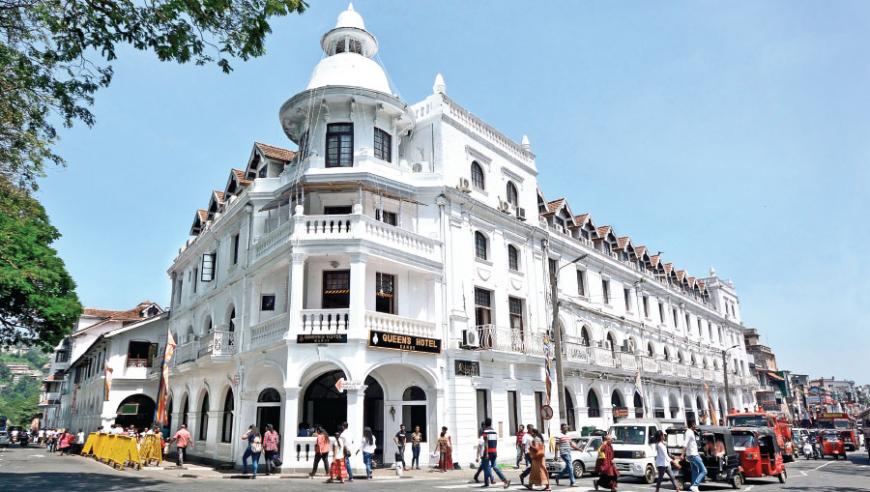2 September, 2018

VIGNETTES FROM A VIBRANT PAST: Having visited the Temple of the Tooth, I made up my mind to explore some old world British architecture of a bygone era, scattered in the heart of the town. Continuing my walk towards the hub of Kandy town, the first stop was the Queen’s Hotel, a historic building in the city, on the bank of the Kandy Lake, shaded with sprawling Mara trees. The magnificent white structure is located on the Dalada Veediya, the main street in Kandy on one side, and Trincomalee Street on the other, forming a V shape. The original building was constructed to meet with the requirements of British colonial administration shortly after the fall of Kandy in 1815. The building complex used as Governor’s Mansion by the Government was later transformed as the mess complex of the Ceylon Rifles Regiment, and named Malabar House in 1840. Malabar House became a Royal Boarding House. In 1879, the entire complex passed into the hands of Miss Piachaud, who made it a popular spot for the British planters, army officers and visitors to Kandy. In 1895, Miss Piachaud’s hotel was acquired by Kandy Hotels Company Ltd., while retaining the title as Queen’s Hotel. It bears features of 19th century ‘British Railway Station architecture’. Rounded pillars and steel girdles are retained even today.
Mahil Wijesinghe walks the streets of the beautiful hill country capital, the city of Kandy, home to the Sacred Tooth Relic of the Buddha. Kandy, the last capital of Sri Lanka, was declared a UNESCO World Heritage Site in 1988. With 2,500 years of flourishing Buddhist heritage and British colonial architecture since 1815, it is a city where you will find architectural jewels which ever way you turn
